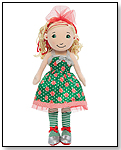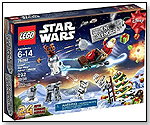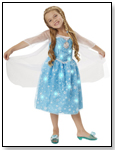|
|
Seasonal Store Displays: Promotion with a Theme Holidays and themes are important in attracting attention and increasing sales. Cindy Blewett, owner of Truly Texan , a web design and hosting service, jokingly says she thinks just like her clients, so an audacious request for a lavender site with fuchsia polka dots on the second page doesn´t bother her. How daring is too daring? "The perfect seasonal design for a website depends on who the target audience is and what the product is," she explains. "On a website, you want the seasonal effects to be complementary, not dominant. The easiest way to decorate electronically is to have one or two elements on the home page that can be changed depending on the season. One of these elements might also be carried through on all the other pages to reinforce the theme. The toy and hobby industry are all about fun, so, in general, they can get a little wilder and more colorful than the gift or services industry." Blewett says Google is an excellent example to follow. They decorate their name without placing distracting graphics all over. She advises, "Look at a site for just three seconds. If all you remember is the cursor that trailed stars or the neon green background that nearly burned your retina, then I suspect that site would qualify as gaudy." This advice can apply to traditional in-store displays as well as to the Internet. Susan Miller, operations manager for The Santa Claus House in North Pole, Alaska, is an expert on Christmas and the creation of tasteful store displays. With the assistance of the store director and floor displayer they agree on a plan to generate dollars with the lowest possible cost. "In our business, summer produces eighty percent of our sales. We have to get the best return possible for our displays when we have the highest traffic. In the summer season the holiday displays are decorated with an Alaskan or North Pole theme to appeal to our visitors from out-of-state. In the actual holiday season, displays are used to make Christmas shopping a magical experience and significantly different from your standard variety store," says Miller. They use a variety of sleighs, unusual tables and chairs, antique pieces, trees, crates, acrylic cubes, birch log pieces and baskets. Their two largest wall displays are devoted year-round to the Original Letter from Santa. Miller recommends using these eight rules in creating a display: 1. Watch placement and arrangement. 2. Keep your theme consistent and complementary, whether woodsy, whimsical, or contemporary. 3. Coordinate colors, ribbons, lights, and other display items. 4. Vary the height of objects. 5. Use all the space in a display from floor to ceiling. 6. Everything should be touchable and able to be purchased easily. 7. Keep adequate space for customer traffic around the display. 8. Rather than investing in display pieces, incorporate merchandise that will return dollars. Most of their ideas are generated at gift shows, company showrooms, and through travel, Miller says. "One of our main entry displays for 2004 we saw set up at the Roman Company in Chicago. The merchandise drives our displays. We never create a display apart from considering the inventory we have and want to move." Writer's Bio: Julia Ann Charpentier is a Milwaukee-based freelance writer and an editor for book publishers. Read more articles by this author
|
| ||||||||||||||||||||||||||||||||
Disclaimer Privacy Policy Career Opportunities
Use of this site constitutes acceptance of our Terms of Use.
© Copyright 2025 PlayZak®, a division of ToyDirectory.com®, Inc.



